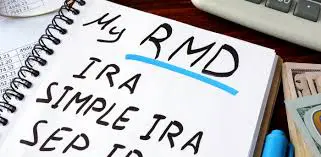
When you have a pre-tax retirement account (like a Traditional IRA, SEP IRA or 401(k)) the time will come when you will need to begin to take Required Minimum Distributions or RMDs.
RMDs start in the year that the account-holder turns 70.5 years of age. That is, six months after your 70th birthday.
When you hit this RMD age you need to begin taking distributions. These distributions need to be taken by April 1st following the year you attain the age of 70.5. This date is called the “Required Beginning Date” or RBD. The RMD required withdrawal is based on the balances of all your pre-tax retirement accounts combined.
It’s important to note that once you reach this age you can no longer make contributions to your pre-tax retirement accounts. You can still make contributions to a Roth IRA, however, so long as you have earned income and that income does not exceed the IRS limits.
It’s a great idea to get some tax-planning advice as you near this milestone, as you will need to withdrawal (and pay tax on) your IRA savings. You can find a RMD worksheet on the IRS’ website here –https://www.irs.gov/pub/irs-tege/uniform_rmd_wksht.pdf
Be sure to stay on top of taking these distributions because failing to do so leads to an “Excess Accumulation Penalty Tax” IRC Sec, 4974. This penalty is 50 percent of the amount that should have been taken out of the IRA but was not.
There are exceptions to this penalty and you can apply for a waiver by filling out IRS form 5329 – https://www.irs.gov/pub/irs-pdf/f5329.pdf
If the IRS agrees with you that your failure to take a withdrawal was a mistake, they could waive the penalty tax amount.
Think 70.5 is too young to start tapping into your retirement dollars Recently, the Retirement Security & Savings Act (S. 1431) was introduced. This bill proposes to raise the RMD age to 72 in 2023 and age 75 by 2030. You can read the full bill here – https://www.portman.senate.gov/sites/default/files/2019-05/Retirement%20Security%20%26%20Savings%20Act%20-%202019%20final_0.pdf

